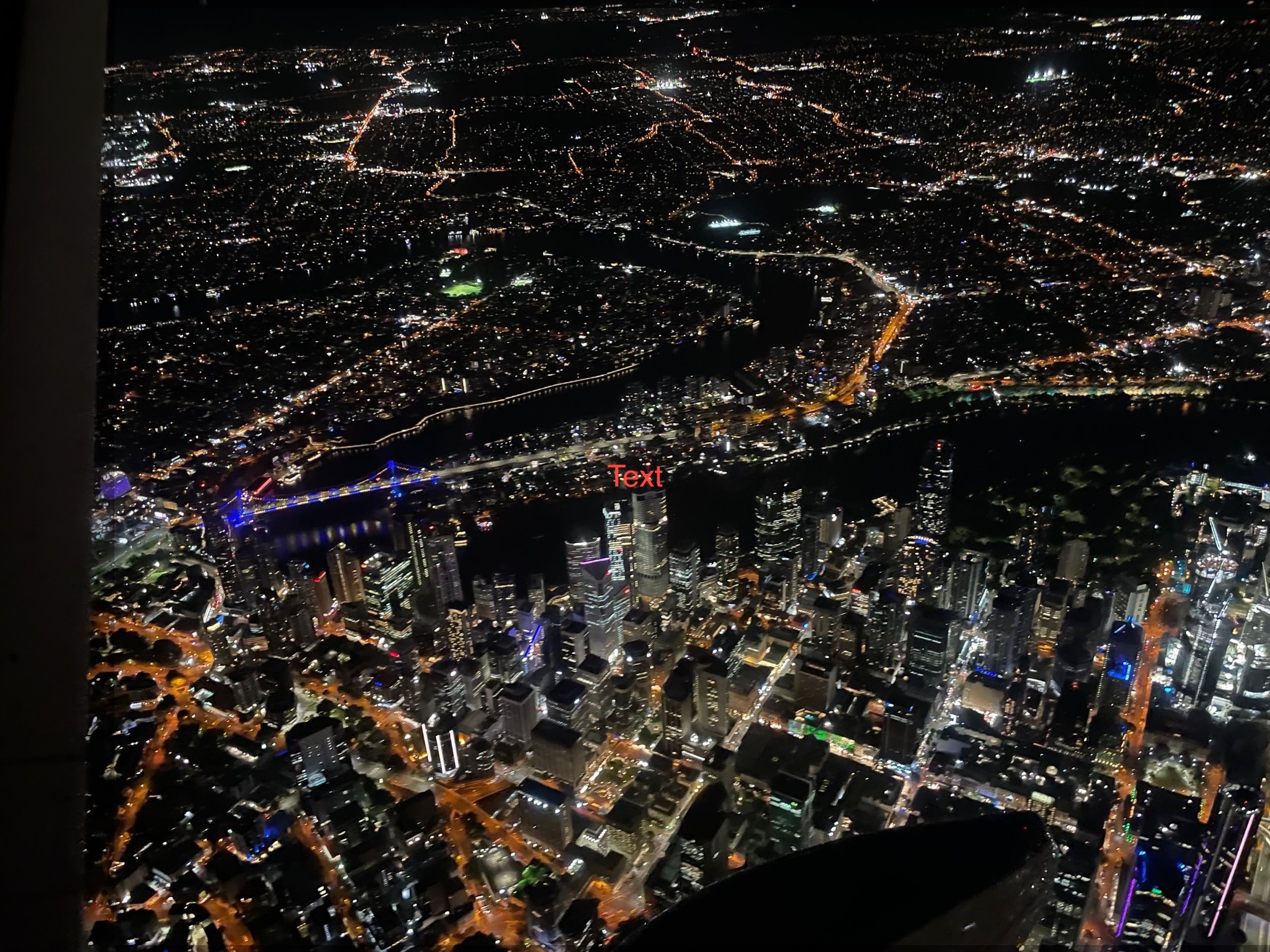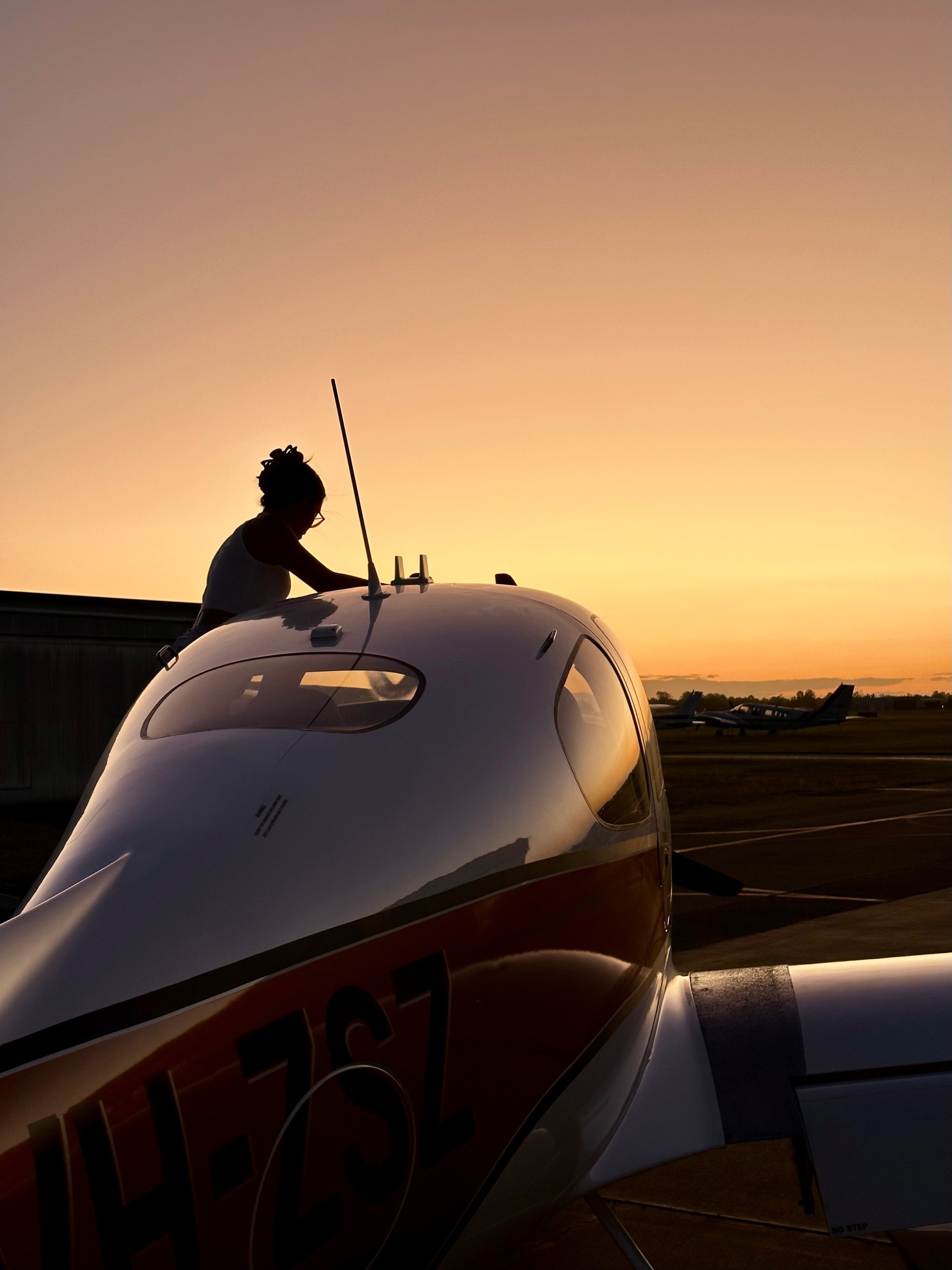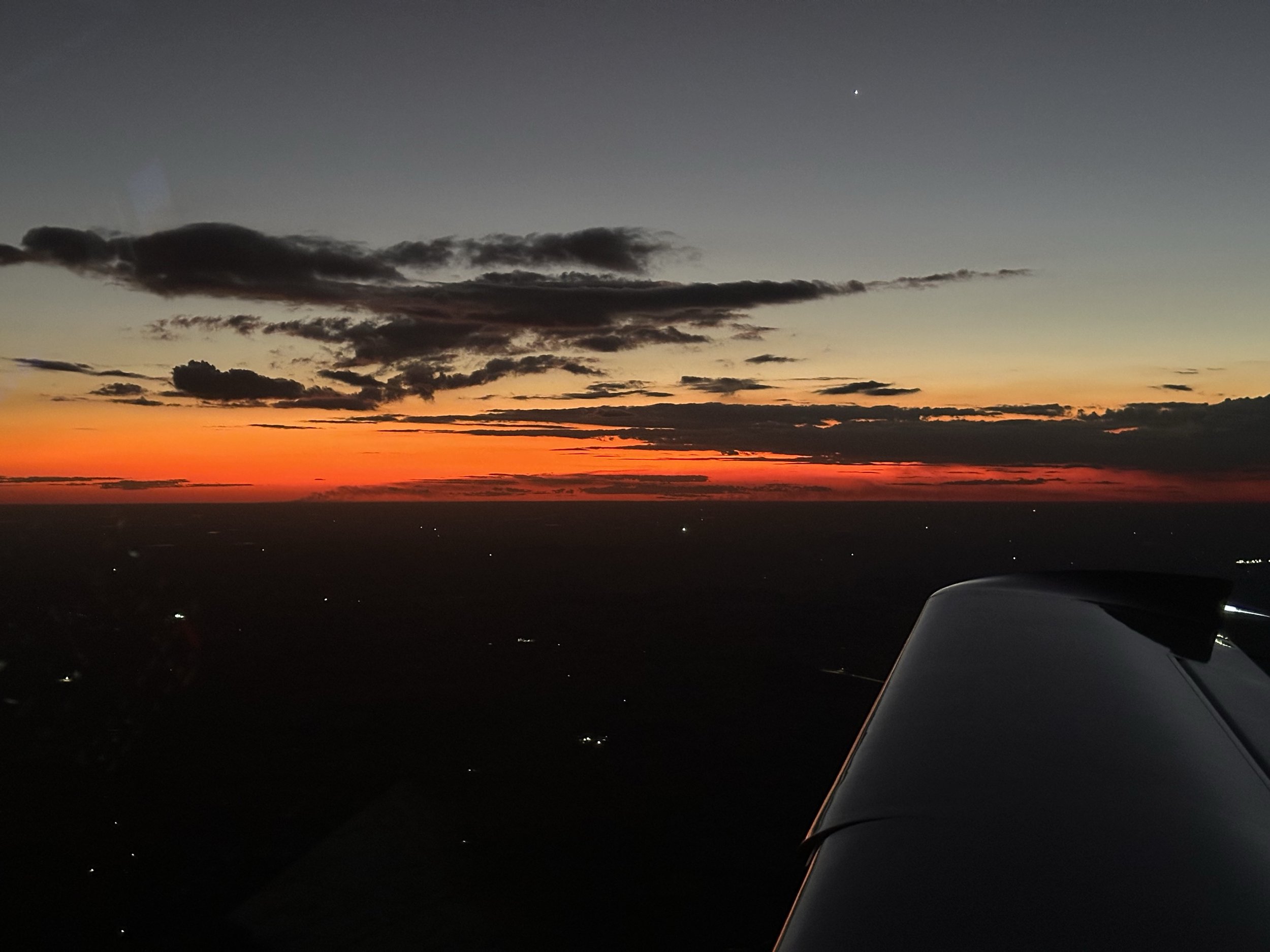Mastering Night VFR: Essential Knowledge for After-Dark Flying
There's something special about flying after the sun sets. The air is smooth, and city lights create a breathtaking tapestry below. But as any experienced pilot knows, night flying introduces challenges that even seasoned day VFR pilots must prepare for.
A Night VFR rating is quite unique to Australia – not every country has a specific rating for nighttime operations. Rather than simply being about flying in complete darkness, it covers the period from last light (when the sun is 6 degrees below the celestial horizon) to first light. This rating provides valuable flexibility to adjust departure and arrival times, especially when delays might otherwise force a cancellation.
But how confident are you in your night flying knowledge? Let's explore some critical considerations that might deserve a refresh.
Currency Requirements: Are You Legal to Fly Tonight?
The regulations for night flying currency are stricter than their daytime counterparts, and for good reason. You must have completed at least one takeoff and landing at night within the preceding 6 months in an aircraft of the same category (remember: helicopter or airplane constitutes a category, while single or multi-engine is a class).
Planning to bring passengers? The bar gets higher – you'll need three-night takeoffs and landings within the last 90 days.
Many pilots are surprised to learn that while night operations count toward day currency, the reverse isn't true. This one-way relationship has caught out numerous pilots who discovered too late that their extensive day flying doesn't qualify them for night operations.
Is Your Aircraft Properly Equipped?
Aircraft equipment requirements expand significantly for night operations. Beyond the obvious lighting systems, your aircraft needs a full complement of instruments and navigation capabilities.
The required "6-pack" includes an airspeed indicator, altimeter, compass, turn and slip indicator, attitude indicator, and vertical speed indicator – with the VSI requirement being relatively new under CASR Part 91.
Navigation requirements can be particularly confusing. You need at least one approved navigation system: GNSS, VOR, or NDB. But different technical standard orders (TSO) for your GNSS affect your alternate planning requirements. A C129 device triggers different requirements than the more modern C145 or C146 systems. The CASA Part 91 regulations outline the full list of requirements for night VFR operations in Australia.
The Hidden Dangers: Visual Illusions at Night
Perhaps the most insidious aspect of night flying involves the way darkness affects human perception. Your eyes function differently at night, relying primarily on rod photoreceptors (peripheral vision) rather than the cone photoreceptors (central vision) used during daylight.
This physiological shift creates vulnerability to several dangerous illusions:
Black hole approach – When approaching an aerodrome over dark terrain, depth perception becomes severely compromised. Pilots often believe they're higher than they actually are, resulting in dangerous low approaches. This phenomenon has contributed to numerous accidents worldwide.
Autokinesis – Staring at a single light against a dark background for more than a few seconds causes the light to appear to move, creating disorientation. Many pilots have misinterpreted this illusion as aircraft movement, leading to dangerous control inputs.
Somatographic illusions – The acceleration forces during takeoff can create a powerful sensation of pitching up excessively, even when the aircraft attitude is normal. This has led pilots to push forward on the controls immediately after takeoff – with catastrophic results.
Understanding these illusions is one thing – developing the techniques to counteract them requires proper training and practice. CASA’s Night Flying Safety Guide provides additional insights on avoiding illusions and improving situational awareness.
Lower Safe Altitudes: Higher Stakes at Night
Calculating and adhering to appropriate lower safe altitudes becomes even more critical after dark. While there are three different approaches to determining lower safe altitudes (grid, route, and manually calculated), the complexity increases at night with greater clearance requirements.
For manually calculated lower safes, you must add 1,000 feet to the highest obstacle or 1,360 feet to the highest terrain along your route. This often results in significantly higher altitudes than day VFR pilots are accustomed to.
The challenge? These higher altitudes can put you closer to or even into freezing levels, introducing icing risks that many light aircraft aren't equipped to handle. This interplay between safe altitude requirements and weather hazards requires sophisticated planning that many pilots haven't fully mastered.
When Weather and Night Combine
Weather phenomena that seem manageable during daylight take on new dimensions at night. Thunderstorms become harder to see and avoid visually. Fog formation that might be obvious during the day can be nearly impossible to detect until you're in it. Even judging cloud bases becomes remarkably difficult in low-light conditions.
At night, your forecast analysis needs to be more conservative, and your alternate planning more thorough. The standard 45-minute fuel reserve for night VFR (compared to 30 minutes for day operations) reflects this increased uncertainty.
Is Your Night Flying Knowledge Current?
Night flying skills and knowledge erode quickly without regular practice. Even if you're legally current, are you truly proficient? Consider:
How comfortable are you interpreting and activating various aerodrome lighting systems?
When was the last time you manually calculated lower safe altitudes for night operations?
Do you fully understand the circling area limitations for descending below lower safe altitude?
How confident are you in evaluating weather forecasts specifically for night flying risks?
Are you up to date on alternate planning requirements based on your navigation equipment?
Enhance Your Night Flying Safety
Whether you're working toward your night rating, looking to refresh your knowledge, or planning to return to night flying after a break, continuous learning enhances both safety and confidence.
At TEAM Aviation, we believe in supporting pilots through comprehensive night VFR training and refresher. Our upcoming Night VFR Refresher session explores these topics in greater depth, with practical examples and interactive case studies.
Don't let uncertainty keep you grounded after sunset. Invest in your skills and join fellow pilots committed to mastering the night sky safely.




